
Beaujolais is a French Appellation d'Origine Contrôlée (AOC) wine generally made of the Gamay grape, which has a thin skin and is low in tannins. Like most AOC wines they are not labeled varietally. Whites from the region, which make up only 1% of its production, are made mostly with Chardonnay grapes though Aligoté is also permitted until 2024. Beaujolais tends to be a very light-bodied red wine, with relatively high amounts of acidity. In some vintages, Beaujolais produces more wine than the Burgundy wine regions of Chablis, Côte d'Or, Côte Chalonnaise and Mâconnais put together.

Barolo is a red denominazione di origine controllata e garantita (DOCG) wine produced in the northern Italian region of Piedmont. It is made from the nebbiolo grape and is often described as one of Italy's greatest wines.

Chablis is the northernmost Appellation d'origine contrôlée of the Burgundy region in France. Its cool climate produces wines with more acidity and less fruitiness than Chardonnay vines grown in warmer ones. These often have a "flinty" note, sometimes described as "goût de pierre à fusil", and sometimes as "steely". The Chablis AOC is required to use Chardonnay grapes solely.

Burgundy wine is made in the Burgundy region of eastern France, in the valleys and slopes west of the Saône, a tributary of the Rhône. The most famous wines produced here, and those commonly referred to as "Burgundies", are dry red wines made from pinot noir grapes and white wines made from chardonnay grapes.

Terroir is a French term used to describe the environmental factors that affect a crop's phenotype, including unique environment contexts, farming practices and a crop's specific growth habitat. Collectively, these contextual characteristics are said to have a character; terroir also refers to this character.

Bordeaux wine is produced in the Bordeaux region of southwest France, around the city of Bordeaux, on the Garonne River. To the north of the city, the Dordogne River joins the Garonne forming the broad estuary called the Gironde; the Gironde department, with a total vineyard area of 110,800 hectares, is the second largest wine-growing area in France behind the Languedoc-Rousillon.

The Côte de Nuits is a French wine region located in the northern part of the Côte d'Or, the limestone ridge that is at the heart of the Burgundy wine region. It extends from Dijon to just south of Nuits-Saint-Georges, which gives its name to the district and is the regional center. Though some white and rosé wines are produced in the region, the Côte de Nuits is most famous for reds made from pinot noir. The Côte de Nuits covers fourteen communes. Six produce grand cru wines, in the central district between Gevrey-Chambertin and Nuits-Saint-Georges, with four lesser villages either side. The Grand Crus of the Côte de Nuits are some of the smallest appellations in France, less than a hectare in the case of La Romanée.
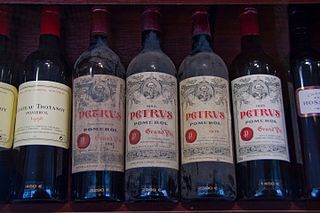
Wine fraud relates to the commercial aspects of wine. The most prevalent type of fraud is one where wines are adulterated, usually with the addition of cheaper products and sometimes with harmful chemicals and sweeteners.
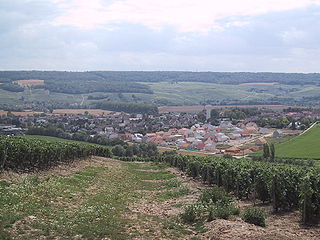
The Champagne Riots of 1910 and 1911 resulted from a series of problems faced by grape growers in the Champagne area of France. These included four years of disastrous crop losses, the infestation of the phylloxera louse, low income and the belief that wine merchants were using grapes from outside the Champagne region. The precipitating event may have been the announcement in 1908 by the French government that it would delimit by decree the exact geographic area that would be granted economic advantage and protection by being awarded the Champagne appellation. This early development of Appellation d'Origine Contrôlée regulation benefitted the Marne and Aisne districts to the significant exclusion of the Aube district which included the town of Troyes—the historic capital of the Champagne region.
The glossary of wine terms lists the definitions of many general terms used within the wine industry. For terms specific to viticulture, winemaking, grape varieties, and wine tasting, see the topic specific list in the "See also" section below.

Henri Jayer was a French vintner who is credited with introducing important innovations to Burgundian winemaking. He was particularly known for the quality of his Pinot noir. Jayer was born in Vosne-Romanée. He attended the University of Dijon in the 1940s and earned a degree in oenology. Using a 7.4-acre (3.0 ha) inheritance that included parcels in the Échezeaux and Beaux Monts vineyards, Jayer began producing wine under his own label in the 1950s. Henri Jayer wines are now highly sought after and renowned for their balance and elegance, as well as their lushness and concentration. One bottle sells for thousands of dollars.
Maison Louis Latour is a merchant and owner of red and white wines in Burgundy, France. It has remained independent and family-owned since 1797. Maison Louis Latour has the largest holding of Grand Cru in the Côte d'Or with a total of 28.63 hectares.
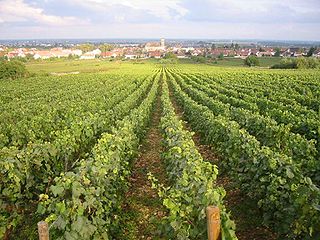
Marsannay wine is produced in the communes of Marsannay-la-Côte, Couchey and Chenôve in the Côte de Nuits subregion of Burgundy. The Appellation d'origine contrôlée (AOC) Marsannay may be used for red and rosé wine with Pinot noir, as well as white wine with Chardonnay as the main grape variety. Red wine accounts for the largest part of the production, around two-thirds. Marsannay is the only village-level appellation which may produce rosé wines, under the designation Marsannay rosé. All other Burgundy rosés are restricted to the regional appellation Bourgogne. There are no Grand Cru or Premier Cru vineyards in Marsannay. The Marsannay AOC was created in 1987, and is the most recent addition to the Côte de Nuits.

A winemaking cooperative is an agricultural cooperative which is involved in winemaking, and which in a similar way to other cooperatives is owned by its members. The members in a winemaking cooperative are usually vineyard owners, who deliver grapes to the cooperative, which is involved in production of wine from the grapes and the subsequent marketing activities.

The history of French wine, spans a period of at least 2600 years dating to the founding of Massalia in the 6th century BC by Phocaeans with the possibility that viticulture existed much earlier. The Romans did much to spread viticulture across the land they knew as Gaul, encouraging the planting of vines in areas that would become the well known wine regions of Bordeaux, Burgundy, Alsace, Champagne, Languedoc, Loire Valley and the Rhone.

Grower Champagnes or Artisan Champagnes are Champagnes produced by the estate that owns the vineyards where the grapes are grown. Récoltant-Manipulant is the term in French, and Grower Champagnes can be identified by "RM" on the wine label. While large Champagne houses such as Mumm, Moët et Chandon and Veuve Clicquot may use grapes from as many as 80 different vineyards in the Champagne region to create a consistent house style, Grower Champagnes tend to be more terroir-focused, sourced from a single vineyard or closely located vineyards around a village, and made with grapes which vary with each vintage. Today there are over 19,000 independent growers in the Champagne region, accounting for nearly 88% of vineyard land in the region; around 5,000 of these growers produce wine from their own grapes. Of the Champagne imported into the US in 2014, only 5% was Grower Champagne.
Domaine Armand Rousseau is a French wine grower and producer. It is based in Gevrey-Chambertin, in the Côte de Nuits wine-growing region of Burgundy, France.
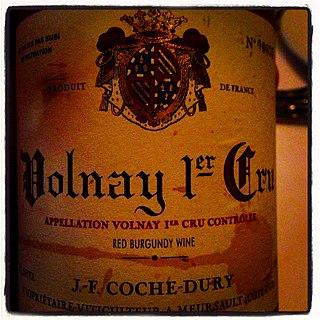
Domaine Coche-Dury is a French wine grower and producer. It is based in Meursault, in the Côte de Beaune wine region of Burgundy, France.
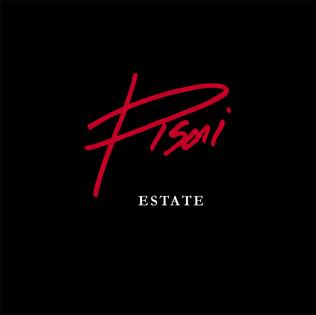
Pisoni Estate is a family-owned and operated vineyard and winery located in the Santa Lucia Highlands of California’s Monterey Coast. It was founded in 1982 by Gary Pisoni, who was more interested in growing wine grapes than row crops for the family vegetable farm. He decided to plant a vineyard in the mountains above the Salinas Valley--an area previously considered undesirable for growing because of its dry, granitic soil. The vineyard began with small crops of Chardonnay, Cabernet Sauvignon, and Pinot Noir, then eventually focused on the Pinot Noir for which it has become renowned.

















